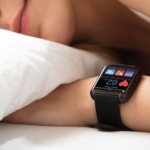A third use of Glass in education is to let a student stream his or her physical examination of a patient to an attending physician, who would be able to provide real-time feedback by looking at the examination through the student’s perspective. Students may use mental or a written checklist and algorithms to learn how to structure interview and patient examination. Companies are already developing products that allow physicians to engage with a checklist while using Glass. This will let students access condensed medical reference material much faster than checking a smartphone.
Another example in a rheumatology teaching environment is the supervision of procedures, such as a diagnostic arthrocentesis. Junior rheumatology fellows may need direct supervision by faculty to conduct such procedures, but senior fellows may also benefit from supervision even though it may not always be necessary. Such fellows wearing Glass while conducting procedures—in the emergency department, for example—could be teleconferenced to supervising attendings located in a clinic.
Surgery Applications
Many surgeons around the world are now testing Glass in a clinical setting.8 In May 2014, a surgeon wearing Glass in the U.K. broadcast a procedure in real time watched by 13,000 people in 115 countries.9 Viewers had the opportunity to ask questions that appeared on the Glass display, and the surgeon could address the questions while operating. A potential benefit of the device would be to enable consultants to mentor junior surgeons through a procedure without being in the operating room. The possibility to practice with specific feedback is critical to the mastery of surgery. But another important aspect of surgical training is to gradually give the resident confidence to perform the surgery alone. It will also allow the surgeon to watch a video tutorial or let surgeons record their procedure with the Glass for subsequent analysis of their own performance.
Two major limitations of using Glass in a surgical setting are: 1) The camera is not designed for surgery; its viewing angle does not exactly match the wearer’s perspective. This is correctable by attaching a glass prism on the camera made by the company Designs for Vision. And 2) the bone conduction (the speaker) is not loud enough to be used in a noisy environment like the operating room, although with the second iteration of the Google Glass Explorer Edition, Google does provide an earpiece that can be used via the micro USB port.
In addition to these real-time scenarios, we would like to emphasize the possibility of recording videos for educational use with very little effort and minimal interference with the actions of the surgeon. In addition to the operating room, examinations, interviews and procedures may easily be recorded and used later as teaching examples. In particular, the possibility of using Glass in the street in serious emergencies, such as earthquakes, will provide new educational material of rare events.
